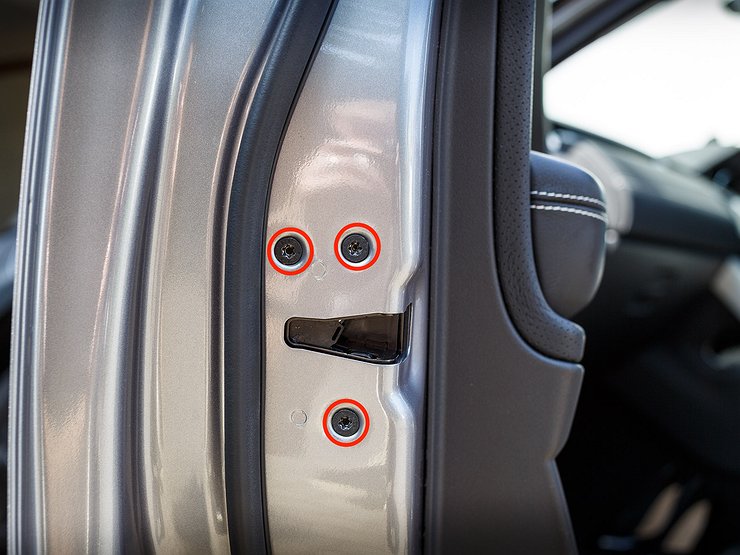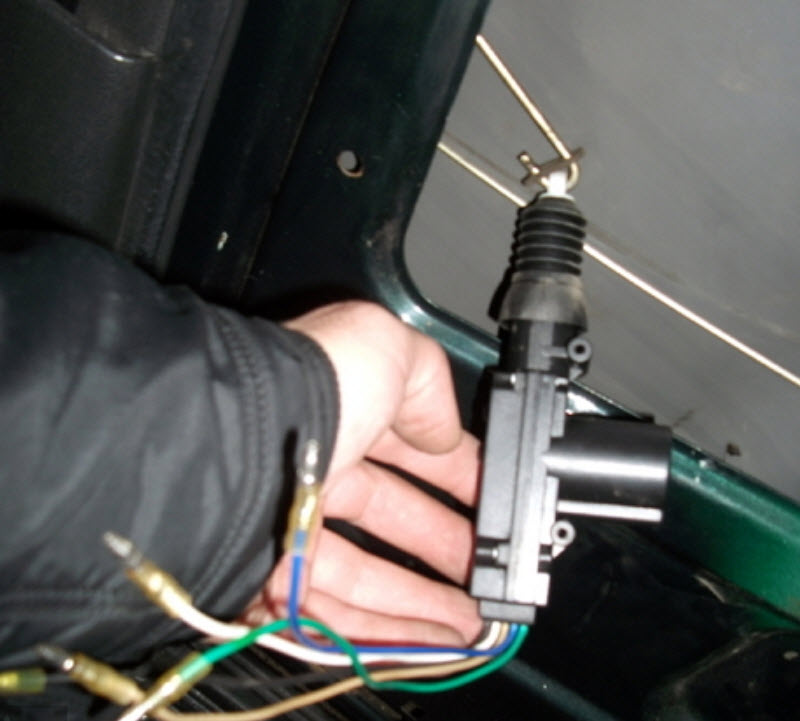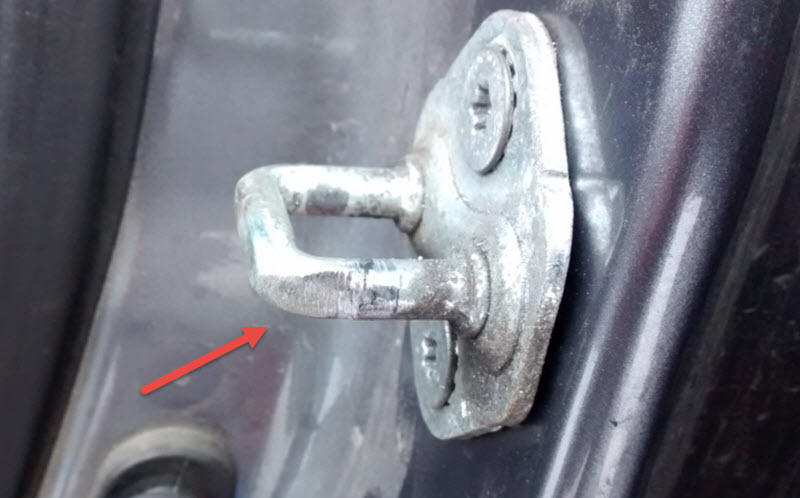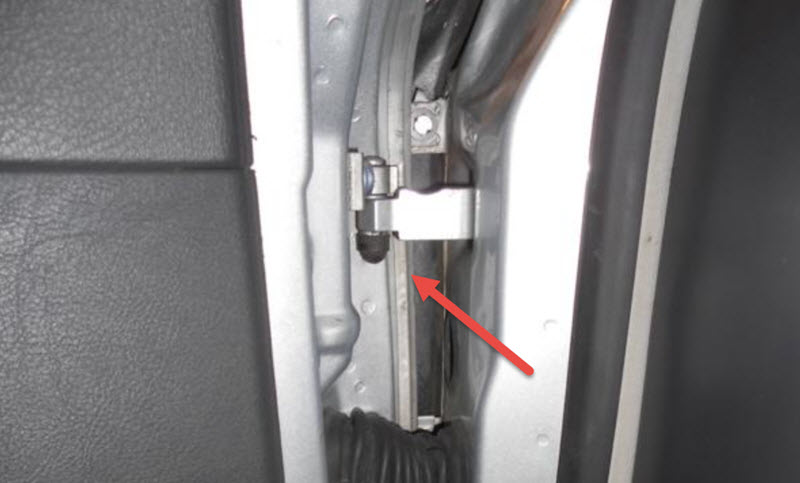
The door in the car does not close - causes and solutions to the problem
Content
Failure of the door lock occurs in different manifestations. The door may either not close with the usual latches, or slam shut normally, but not lock. In the general design of locks, various devices are responsible for this, both purely mechanical and with electronic elements.

Why won't the car door close?
The sources of problems are the results of the natural aging of mechanisms. They may be:
- wedging of poorly lubricated and contaminated parts;
- wear of plastic, silumin and steel parts of the locking mechanism;
- violation of adjustments, especially with regard to the mating part of the lock located on the body pillar;
- distortion of the shape of the doorway for various reasons;
- deformation of the suspensions (hinges) of the door due to long work or mechanical overloads;
- corrosion of parts, including electrics, wires, tips, connectors;
- burning and weakening of electrical contacts;
- failure of the closed blocks of the motor-reducer that control the electric lock;
- failures of control electronics, blocks and their power circuits.
Sometimes the reasons are quite simple and obvious, if the driver has repair skills, they can be eliminated without a visit to a car service, where they are reluctant to undertake such repairs.

Causes
First you need to decide what exactly happened and in which direction to move to troubleshoot.
- If the door doesn't close - the locking mechanism is to blame or its adjustment is knocked down. It is necessary to deal with the lock block on the door and the counterpart on the rack, their relative position. Perhaps the lock has nothing to do with it, it will be clear from the characteristic knocks that the door is simply not in place.
- When the same thing happens in frost, especially after washing the car, then most likely water got into the mechanisms, after which ice formed. It is enough to warm and lubricate the lock so that it works again.
- Understand why it doesn't work mechanical fixation of locks in the locked state, you can remove the door card (door trim) and see how the latch rods interact with the latch mechanism. Much will become clear. Often a small adjustment in the length of the rods is sufficient.
Sudden failures of mechanisms and gross breakdowns themselves are quite rare. Often the mechanism for a long time reminds the owner with periodic problems that it is time to take action, replace worn parts or simply clean and lubricate.
Because of what the door does not close from the central lock and the alarm key fob
If the mechanical latch works, but the electronic one fails, then it should be remembered that the boundary between them runs along the line of the actuator thrust (gear motor).
This is a small detail of a characteristic shape, fixed inside the door and connected on one side by wires with control, and on the other - by mechanical traction with lock blocking. Usually both rods, from the actuator and from the manual button, converge on one part.


Actuators should work both from the central lock, that is, when one door is activated, the rest are triggered, and from the security system, from the key fob. Both can fail.
Repairs will most likely require the knowledge and tools of a professional auto electrician, although some basic things can be checked in person with the hope of luck:
- visually check the condition of the wiring, it is possible to detect damaged insulation or breaks at the connectors;
- use a control light to check the power supply to the actuator motors;
- ring the contacts of the central lock with a tester;
- change the battery in the key fob.
It may be worth re-reading the instructions for the security system and for the car as a whole. Some characteristic failures may be documented there. As well as the procedure for working with remotes in case of equipment failures.


Watch this video on YouTube
Why won't the tailgate lock open?
The fifth (or third door) hatchback bodies are no fundamentally different from all others. It has the same mechanical lock with a counterpart, a central lock actuator and additional devices, buttons or larvae. The role of a manual locking latch can be performed by a turnkey code cylinder (larva).
A body with a large number of doors is theoretically less rigid, so the lock may not work due to distortions in the opening. Some cars, especially heavily used ones, refuse to open or close the back door simply when hitting a bump in the road.
If the deformation is residual, then it can be eliminated by adjusting the lock. Otherwise, the causes of the malfunctions are similar to those described above.


What to do if the door does not close - the procedure for finding a breakdown
You need to start by collecting facts on the history of the malfunction. Whether it was formed suddenly, or partially manifested earlier. Is this due to a change in the weather, that is, the appearance of ice in the mechanisms.
Then remove the door card and inspect the mechanisms, check the condition of the fasteners, the presence of grease or contamination.


Watch this video on YouTube
Retainer repair
If you manually latch the lock with the door open, then with the door trim removed and the glass raised, you can observe the action of the latch. It is intuitively clear what he lacks for a clear operation.
On the plastic tips there are threaded couplings with lock nuts, by turning which you can change the length of the rods in the desired direction.


It should be remembered that the adjustment of the rods and locking levers clearly affects the operation of the latch. With incorrect adjustments, they will either not be able to lock or refuse to latch when the door is closed.
Some difficulties are caused by the removal of plastic tips from ball joints. To prevent breakage and deformation, it makes sense to purchase or make a device in the form of a bracket and a lever for undocking such hinges. It is not always possible to do this with a screwdriver.
Actuators cannot be repaired, but replaced with new ones. There will be no problems with this, the designs are unified, widespread and inexpensive.
Adjusting the locks
The final result of the adjustment should be a reliable locking of the lock for the required number of clicks (usually two) with a slight slam of the door. The reciprocal part of the lock is adjusted along two axes, vertical and horizontal. Movement is possible after loosening the fixing screws.


Watch this video on YouTube
Vertically, the compensation of possible subsidence of the door in the opening is regulated, and horizontally - the wear of the parts of the lock and the door seal. The closed door should stand exactly in the opening, without protruding or sinking, with uniform gaps along the opening.
Hinge replacement
When the hinges are extremely worn out, the door does not sit in the opening with any bending and gaskets, and the car has a serious mileage, it may be necessary to install new hinges.


A lot will depend on the specific car. On some it is enough to have a repair kit, on others the hinge is installed using threaded fasteners, but still the majority will require qualified locksmith intervention, possibly with welding operations, processing and painting.
And at the end of the procedure, the door will have to be very precisely adjusted along the opening, which is very similar to art. Therefore, it would be better to entrust these operations to a car body service.